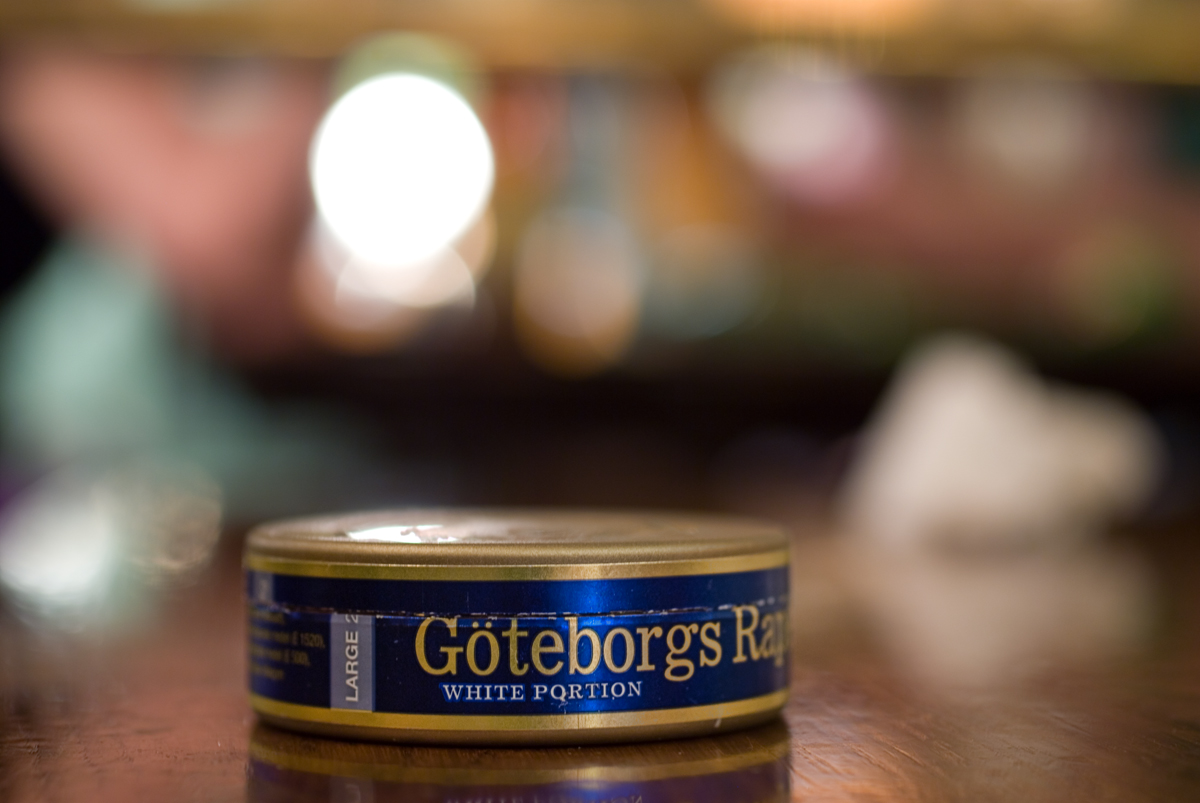The Swedish government has officially confirmed that smoking rates in the country have dropped to 5.6 percent, setting up the nation to become the first in Europe to reach “smoke free” status. The designation “smoke free,” at least in the European Union and the United Kingdom, refers to smoking prevalence of less than 5 percent in a given population.
Sweden’s success is attributable, in large part, to tobacco harm reduction (THR). But rather than the vapes that are replacing smoking in the UK, say, or the heated tobacco products that have seen cigarette sales plummet in Japan, a third major THR option is key to the Swedish story: snus, a moist oral tobacco product that’s placed inside the upper lip.
Smoking rates in Sweden have fallen rapidly in the last few decades: among men from 40 percent in 1976 to 15 percent in 2002, and among women from 34 percent to 20 percent in that period. Those rates have, of course, continued to fall, as snus prevalence—especially in men—correspondingly increased, suggesting a substitution effect.
Studies have shown, too, that lung cancer and heart disease have dropped, again particularly for men, and have remained at low levels when “compared with other developed countries with a long history of tobacco use,” according to one peer-reviewed article in Tobacco Control.
Snus use is traditional in Sweden: A century ago, it heavily outweighed smoking in the country. It then declined, before making a comeback from the 1970s, overtaking smoking once again in the ’90s. The government has, until quite recently, been incentivizing people to switch from cigarettes to snus through taxes.
“It has been difficult [for tobacco control people] to accept that availability to snus may have greater impacts in reducing smoking than the regulations we have spent a lifetime fighting for.”
THR proponents, who often note the World Health Organization’s seeming disdain for safer nicotine products, have frequently pointed to Sweden as a model to be replicated or—at the very least—seriously studied.
“Swedish men consume as much tobacco as their male counterparts [elsewhere] in Europe, but more in the form of snus than in cigarettes—and they have done so for quite a long time,” Dr. Karl Erik Lund, a senior researcher at the Norwegian Institute of Public Health, told Filter. “But having worked within the tobacco control community for 36 years, my impression is that it has been difficult to accept that availability to snus may have greater impacts in reducing smoking than the [tobacco control] regulations we have spent a lifetime fighting for.”
At a recent event run by the Oral Nicotine Commission in Stockholm, Dr. Karl Fagerström, a Swedish psychologist and founding member of the Society for Research on Nicotine and Tobacco (SRNT), shared that he hoped “the upcoming Swedish EU presidency [would be] a great opportunity to share their 5 percent success story to other EU countries.” (Sweden will host the next Council of Ministers, which rotates between EU member states every six months and drives the union’s legislation, starting in January 2023.) “We hope that Sweden will be generous with sharing this know-how internationally,” he added.
The EU has banned the sale of snus since the early 1990s, but Sweden, which joined the bloc not long after the prohibition was enacted, has been exempt. As a whole, the EU aims to be “smoke free” by 2040. England, which has largely embraced vaping, hopes to reach that threshold by 2030.
The fact that snus remains impossible to sell in almost all of the EU has apparently driven Swedish Match—the world’s leading snus producer, which also manufactures the increasingly popular Zyn nicotine pouch—toward the US market. As of 2020, according to the Centers for Disease Control and Prevention, 2.3 percent of US adults reported using a smokeless tobacco product like snus “every day” or “some days.” In November, Philip Morris International (PMI), with its sights also on the American marketplace, obtained more than 90 percent ownership of Swedish Match.
The move was controversial. INNCO, a nonprofit that advocates for the rights of people who use safer nicotine products, demanded in a press release that PMI’s leadership “direct their vast marketing and distribution capacities to ensure that Swedish Match’s snus and nicotine pouch products—which do not cause cancer, heart or lung disease—are available, affordable and acceptable to all smokers in low- and middle-income countries (LMICs).”
But David Sweanor, an independent tobacco industry expert and adjunct professor at the University of Ottawa, has long emphasized that Swedish Match and Volvo, “lauded for its leadership on auto risk reduction,” were once controlled by the same holding company. He has used the comparison to stress that technological transformation in the nicotine industry—unlike, say, the change from gas-powered cars to electric—is still suspect and, most times, unwelcome.
“PMI is close to totally pivoting and actually changing, instead of claiming to change,” Sweanor told Filter. “Owning Swedish Match further pivots them.”
Photograph of snus by Anders Adermark via Flickr/Creative Commons 2.0
The Influence Foundation, which operates Filter, has received grants from PMI. Both The Influence Foundation and INNCO have received grants from the Foundation for a Smoke-Free World. Filter’s Editorial Independence Policy applies.





Show Comments